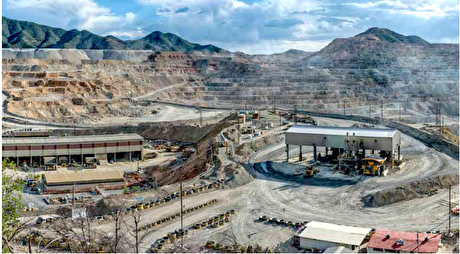
Factors contributing to recent falling trend in stock market

The market, which had managed to absorb some high amount of liquidity in the current Iranian calendar year (began on March 20), has passed several consecutive days of losses recently.
TEDPIX, the main index of Tehran Stock Exchange (TSE), which is Iran’s major stock exchange, fell 89,693 points to 1.813 million on August 16, which was a record of daily drop for the index in the history of the country’s stock market.
It should be mentioned that gaining 45,672 points on August 2, the index had stood at 2.007 million, notching up another outstanding record in the current year.
It had hit the record high of 1.5 million points on June 30, and then it climbed half a million points in just one month to hit the record high of two million.
While this market has not received any external shocks such as those form the foreign currency exchange rate, inflation, parallel markets, and international issues, some internal factors have caused the recent drops in the stock market.
Cancelation of Dara II offering
One of the major factors was canceling the offering of shares through the second exchange traded fund (ETF) on due time.
On May 2, the Tehran Stock Exchange listed the first ETF from a series of three ETFs, through them shares of some state-owned organizations and companies are planned to be offered.
The shares to be offered via the mentioned Iranian ETFs belong to those governmental bodies defined in Iran’s privatization program, a comprehensive plan seriously followed up by the government to downsize and reduce its role in the economy.
The three ETFs are planned to offer 550 trillion rials (about $13 billion) worth of the governmental stakes.
In mid-June, the finance and economic affairs minister announced that the value of shares offered by the first ETF (named Dara I) had doubled.
The second ETF (named Dara II), is to offer shares of four refineries of Tehran, Tabriz, Bandar-Abbas and Isfahan, and with the cancellation of Dara II offering, a drastic fall occurred in the stock market.
Justice Shares liberalization
Liberalization of “Justice Shares”, so that trading them in the stock market would be possible, was another contributing factor for the drop in the market.
Justice Shares are shares of government-owned companies that were given free to the six lowest income groups of the society almost a decade ago. Shareholders were not allowed to sell the shares until May, when based on a government’s plan, the shares were allowed to be tradable in the stock market.
The shareholders were given the option to either directly gain the ownership of their shares and sell it in the stock exchange, or let the investment companies manage their portfolio as in the past.
‘Economic Breakthrough’ plan
The government’s plan named “Economic Breakthrough” was the other issue affecting the stock market, as no details were announced about this plan.
During a meeting of the Supreme Council of Economic Coordination on August 10, the heads of the three branches of the government, namely the executive, legislative and judicial powers decided to draw up plans to counter oil embargo and redirect the high liquidity, which is partly blamed for the high inflation rate.
After the meeting, Eghtesad News website quoted an informed source as saying that the heads of three branches had made an agreement on the plan for the pre-selling of oil, which should be approved by the Leader of the Islamic Revolution to be implemented.
It is said that based on this plan, the government is to sell 220 million barrels of oil through issuing parallel salaf bonds in a course of one year.
A standard parallel salaf is an Islamic contract similar to futures, with the difference being that the contract’s total price must be paid in advance.
Shasta’s index dropping
On April 15, Iran’s stock market witnessed its largest-ever initial public offering, as Social Security Investment Company (SSIC, also known by its Persian acronym Shasta) offered eight billion shares, which account for 10 percent of its stakes, for sales in Tehran Stock Exchange.
Shasta’s index, which experienced a sharp decline after being closed for three days, has been another contributor to the TEDPIX’s recent fall.
Other factors
There are also some other factors leading to the recent drops in the stock market, of them it could be referred to reducing the value of brokerage credit, and conducting trades in two shifts per day at the TSE.
It should be noted that a number of measures have been already made to tackle the mentioned factors which have put the stock market in a decline status.
Data II offering is due to be held on Wednesday (August 26), Justice Shares offering has been stopped, and trades are done in a single shift per day as before. Also, the market is receiving the expected support from the institutional traders.
While some of those active in the capital market and also some economists believe that the recent trend of falling has been a normal correction condition in the stock market, the above-mentioned measures also create some hope for the market’s returning to the previous growth status.
Some even believe that TEDPIX will regain its losses to return to the previous two-million-point level, and even go up to 2.5 million points by the yearend.


Gold price eases after Trump downplays clash with Fed chair Powell

Copper price hits new record as tariff deadline looms

Brazil producers look to halt pig iron output as US tariff threat crimps demand

Chile’s 2025 vote puts mining sector’s future on the line

Gold price could hit $4,000 by year-end, says Fidelity

Three workers rescued after 60 hours trapped in Canada mine

US targets mine waste to boost local critical minerals supply

Glencore workers brace for layoffs on looming Mount Isa shutdown

Energy Fuels surges to 3-year high as it begins heavy rare earth production

Trump tariff surprise triggers implosion of massive copper trade

Maxus expands land holdings at Quarry antimony project in British Columbia

BHP, Vale accused of ‘cheating’ UK law firm out of $1.7 billion in fees

Southern Copper eyes $10.2B Mexico investment pending talks

American Tungsten gets site remediation plan approved for Ima mine in Idaho

Kinross divests entire 12% stake in Yukon-focused White Gold

Gold price could hit $4,000 by year-end, says Fidelity

Southern Copper expects turmoil from US-China trade war to hit copper

Ramaco Resources secures five year permit for Brook rare earth mine in Wyoming

Column: EU’s pledge for $250 billion of US energy imports is delusional

Trump tariff surprise triggers implosion of massive copper trade

Maxus expands land holdings at Quarry antimony project in British Columbia

BHP, Vale accused of ‘cheating’ UK law firm out of $1.7 billion in fees

Southern Copper eyes $10.2B Mexico investment pending talks

American Tungsten gets site remediation plan approved for Ima mine in Idaho

Kinross divests entire 12% stake in Yukon-focused White Gold

Gold price could hit $4,000 by year-end, says Fidelity

Southern Copper expects turmoil from US-China trade war to hit copper

Ramaco Resources secures five year permit for Brook rare earth mine in Wyoming














